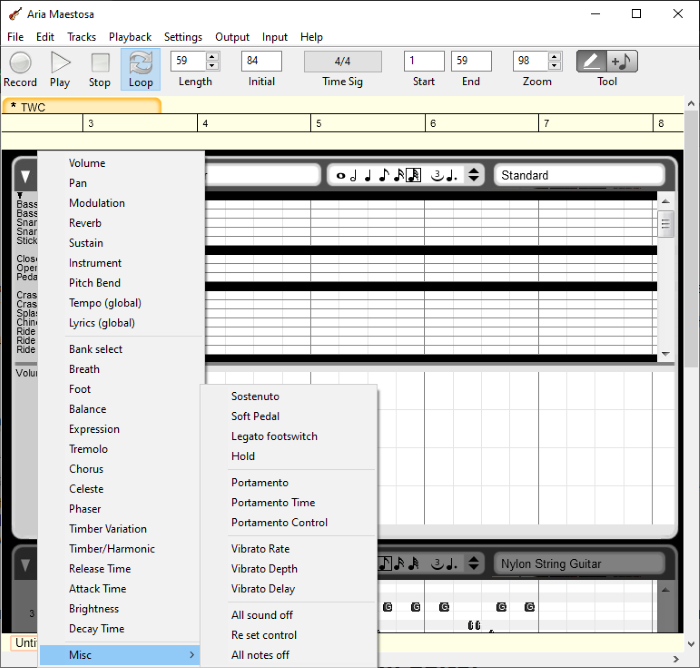

On each channel, several standard MIDI parameters can be controlled: Volume, Panning, Pitch (used for detuning, pitch bends, or "portamento"), Expression (a fraction of volume), and Modulation depth (auto-vibrato). With the exception of drums, MSGS's note priority system favors the earliest channel number, so if you're brushing up against the limit, you will want the most important information in Channel 1, then Channel 2, etc.

Otherwise a virtual machine may be helpful. No one is sure why this was nerfed! FL Studio's Fruity LSD is one useful way to avoid the newer limit, if you own that software.
#Aria maestosa change intrusment windows
The maximum note polyphony of contemporary MSGS is 32, although it used to be 64 during the Windows XP days.
#Aria maestosa change intrusment free
The sound is noticeably raw and free of any DSP effects such as reverb, chorus, distortion etc (unlike our other formats XG and MT-32). Some of the melodic patches also have variants read more about this in the "GS Extension" section below. 128 melodic patches exist, as well as 9 different drumkits. MSGS MIDI uses 16 channels of sound, with channel 10 being reserved for drums. Also, patches are best controlled through the MIDI Out channels' "Patch list" rather than LSD itself. Make sure not to use Fruity LSD's "reverb" and "chorus" options these are not supported by the format and won't appear in your exported MIDI file. FL has its own plugin implementation named "Fruity LSD" that this template is set up with.

This article, though, is about the MIDI BotB format, which is for a specific and iconic implementation, MSGS MIDI - the Microsoft GS Wavetable Synth, infamous for coming bundled with Windows since time immemorial (i.e. mid file much smaller than an audio file, MIDI files have a rich history of use in computer games, software, and websites. Though MIDI was first invented in the early 1980s as synthesizers grew into a burgeoning industry, the General MIDI spec was defined in 1991 and is still frequently adhered to today! A composition saved as a MIDI is a sequence of notes and commands that will be played back by the computer's own MIDI drivers. Generally speaking, MIDI (Musical Instrument Digital Interface) is a protocol that allows multiple electronic instruments and musical devices to communicate and synchronize with themselves. MIDI file made by using the Microsoft GS Wavetable SW Synth (MSGS)!


 0 kommentar(er)
0 kommentar(er)
